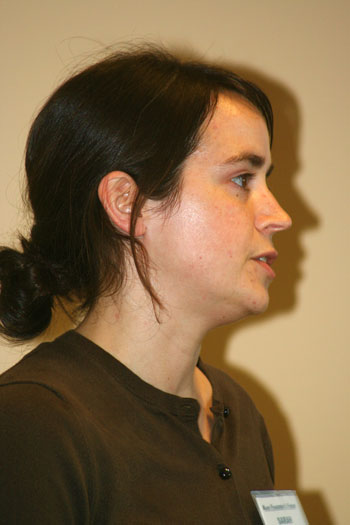审计署报告:省会城市债务率最高达189%
有的地方债务率最高达189%,债务偿还过度依赖土地收入,4个省和17个省会城市本级政府负偿还责任的债务余额中,有55%承诺以土地收入偿还,但这些地方2012年需还本付息额已达其可支配土地收入的1.25倍
 |
有的地方债务率最高达189%,债务偿还过度依赖土地收入,4个省和17个省会城市本级政府负偿还责任的债务余额中,有55%承诺以土地收入偿还,但这些地方2012年需还本付息额已达其可支配土地收入的1.25倍。——审计署有关部门负责人
关键词:地方债
36个地区违规集资变相融资2181亿
【报告摘要】
审计发现,一些地方通过信托、BT(建设-移交)和违规集资等方式变相融资现象突出,采用上述方式融资2180.87亿元(占16%)。审计的地区中,负偿还责任的债务率超过100%的有9个省会城市本级,最高达189%。
【典型案例】
据媒体报道,去年,安徽省淮南市潘集区推出“创新金融产品”——潘集区基础设施建设投资基金,系“政府支持、财政兜底的政府项目”。代持投资人为潘集区工会,基金规模4亿元,一期2亿,期限2年,每半年结息一次,预期收益率8%。当地教育等部门都曾收到基金募集通知,称是一次福利性待遇。
据媒体报道,从2008年至去年,江苏省如皋市经济技术开发区四次向社会借款:第一次借款是2008年,借款期限为期三年;第一年利息为10%,第二年利息为12%,第三年利息为14%;2009年第二次借款,时间长度以及利息与第一次相同;2010年第三次借款,借期两年,利息高达14%;2011年第四次借款,借期两年,第一年利息12%,第二年14%。
【问诊】
债务偿还过度依赖土地收入
新京报:本次审计的36个地区,2012年底的政府性债务余额已达3.85万亿元。这是否表明,全国的地方政府性债务规模非常巨大?
审计署有关部门负责人:这次审计的地区数量虽然只有36个,但这些地区2010年底政府性债务余额,已经占到了全国地方政府性债务总额10.72万亿元的31.79%。
占比较高的主要原因:一是36个地区所涉及的18个省份中,有8个东部省份、5个中部省份、还有西部的一个直辖市,经济总量和财力水平都比较高,债务规模也比较大;二是这次审计的政府级次,都是省本级或省会城市本级,这两个政府级次也是地方政府性债务规模占比最高的。
因此,不能简单地以36个地区占全国地区个数的比重,推算全国地方政府性债务规模情况。
新京报:最近两年,各地的地方债发行规模都在上涨,这带来了哪些风险?
审计署有关部门负责人:审计报告指出,部分地区和行业债务风险凸显:9个省会城市本级政府负有偿还责任的债务率,已经超过100%,最高达189%,债务偿还过度依赖土地收入,4个省和17个省会城市本级政府负偿还责任的债务余额中,有55%承诺以土地收入偿还,但这些地方2012年需还本付息额已达其可支配土地收入的1.25倍。
一些地区通过信托、BT(建设-移交)和违规集资等方式,变相融资问题突出,融资成本普遍高于同期银行贷款利率,如BT融资年利率最高达20%,且不易监管,蕴含新的风险隐患。一些地方还存在违规担保、违规融资、改变债务用途等问题。
审议报告提出建议,加快推进改革,健全财权与事权相匹配的财政体制。
新京报:那么该如何预防这些风险?
审计署有关部门负责人:地方政府性债务查出的问题,必须引起高度重视。应该抓紧建立、完善地方政府性债务规模管理和风险预警机制,实现对地方政府性债务的全口径管理和动态监督。同时进一步清理地方政府的融资平台公司,目前部分融资平台公司质量较差、偿债能力不强。
关键词:金融审计
银行27分支机构违规放贷284亿
【报告摘要】
对5家银行贷款投放和3家银行资产负债损益的审计结果表明,27家分支机构向手续不全或担保不合规等项目放贷284.43亿元。此外,还有183.91亿元贷款被客户挪用。
【典型案例】
●中国农业发展银行辽宁东港市支行原行长李虓等人违法放贷案
2007年,李虓及该支行原副行长岳富春等人,违反信贷审批程序发放贷款2亿多元,部分信贷资产面临损失风险。2011年5月,审计署将此案件线索移送公安部查处。2012年12月,辽宁省义县人民法院以违法发放贷款罪分别判处李虓有期徒刑2年(缓刑3年),岳富春有期徒刑1年6个月(缓刑2年),并各处罚金10万元。
●建银国际(中国)有限公司原董事长张传斌内幕交易案
2010年7月至2011年3月,张传斌在策划厦门翔鹭石化公司借壳上市方案过程中,涉嫌利用知悉的内幕信息,通过出让股权收益权向内部人员输送巨额利益。2011年9月,审计署将此案件线索移送中央纪委监察部查处。2012年10月,北京市二中院以内幕交易罪判处张传斌有期徒刑3年(缓刑4年)。
●招商证券公司投资银行部原执行董事李黎明涉嫌内幕交易案
去年审计查出,招商证券公司投资银行部原执行董事李黎明在负责发行债券和保荐上市业务期间,假借需第三方财务顾问或利用“关系资源”承揽项目之名,虚构中介业务,通过其控制公司骗取中介费近3000万元,还违规持有拟上市公司股权,涉嫌内幕交易。
关键词:财政资金
去年37.7亿元车辆购置税闲置
【报告摘要】
中央本级财政资金闲置较多。公共财政预算中,近5%的收入不能统筹使用,仅车辆购置税就结余37.7亿元,104个部门本级结余结转396.4亿元。
【问诊】
财政资金预算编制不够细化
新京报:财政资金效益不高也是老问题。比如中央本级财政资金,闲置问题突出,仅车辆购置税一项,去年就结余37.7亿元。资金闲置问题为什么屡查屡犯?
审计署有关部门负责人:中央部门财政资金存在一定的累计结转结余问题,除了历史资金结存较多,需要逐年消化外,主要原因还有预算编制不够细化,项目前期准备不是很充分,一些预算安排的项目,当年不具备条件,获得财政拨款后难以安排使用。
解决中央财政资金闲置问题,还是要细化预算编制,完善中央项目储备库制度,深入定员定额改革,做到确有需要、确可执行,才安排预算。逐步推行绩效评价机制,加大效益审计力度。
地方债审计情况
3.85万亿元
截至2012年底,36个地方政府债务余额已接近3.85万亿元,比2010年增加4409.81亿元,增长12.94%。其中银行贷款占78.07%。
20%
债务增长率超过20%的有4个省和8个省会城市本级,最高达65%。
55%
4个省和17个省会城市本级政府负偿还责任的债务余额中,有55%承诺以土地收入偿还,但土地出让收入增幅下降,偿债压力加大。
817.67亿元
2011年至2012年,地方有关部门违规为817.67亿元债务提供担保。
国有金融机构审计情况
284.43亿元
27家银行分支机构向手续不全或担保不合规等项目放贷284.43亿元。
183.91亿元
183.91亿元贷款被客户挪用,22亿元转入民间金融市场,用于高利转贷或归还民间借款。
(来源:新京报)
















